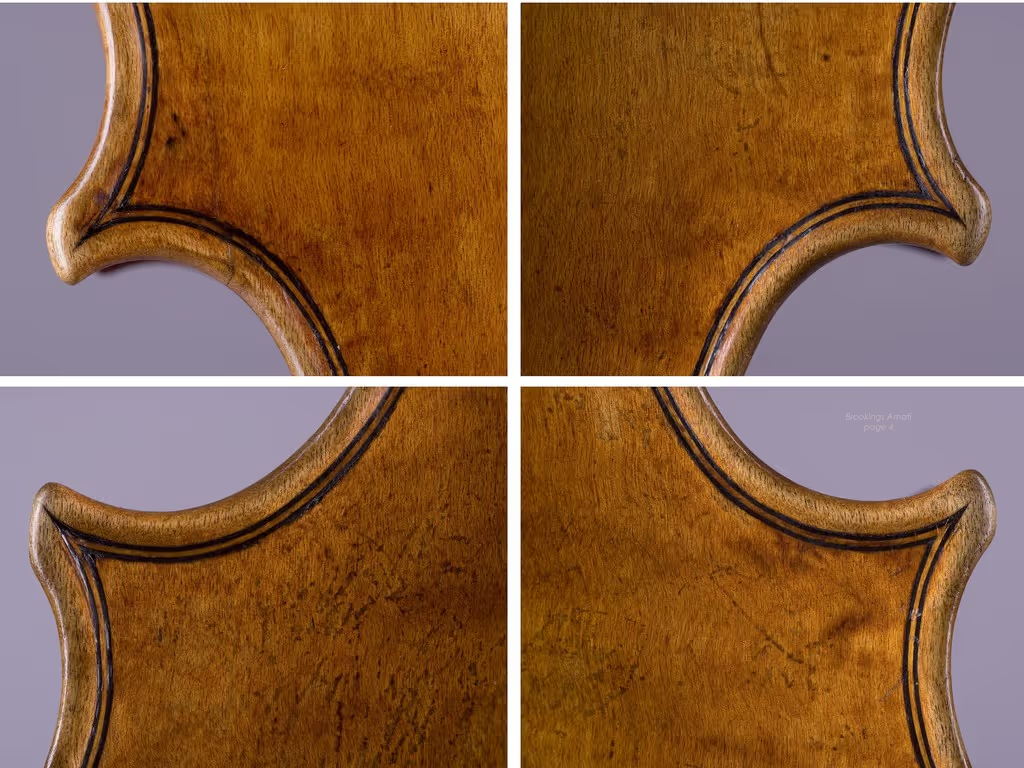The Amatis: violin-making dynasty from Cremona

A family dynasty “set the tone” in the creation of modern violin models. We're talking about four generations of Amati who made legendary and revolutionary stringed instruments in the 16th to 18th century, which are now traded at top prices. Learn more about the passionate and visionary violin makers and Amati stringed instruments for enthusiasts and investors.
The “five big amati”
Between 1520 and 1740, the “five great Amati” lived, who established Cremona's reputation as a violin town and thus ousted Brescia from the throne. They were spread over four generations: the progenitor of Family of luthiers was Andrea Amati. His sons Antonio and Girolamo continued the family tradition. However, the most important representative of the line became Andreas's grandson, Nicola Amati, who designed the model of the so-called “Great Amati” in the 17th century. He was probably also a teacher of Antonio Stradivari and Andrea Guarneri, who also founded important violin making dynasties in Cremona. Nicola Amati's son Girolamo II was in the shadow of his famous father, but he helped to preserve and continue the Amati family's tradition and reputation in violin making.
These were the “five Amatis” of the violin-making dynasty listed chronologically:
- Andrea Amati (ca. 1505-1577) is considered the founder of the Cremonese violin making school. He is responsible for the development of the modern violin and built some of the earliest surviving instruments of this kind. His violins are known for their elegance and clear, sweet sound.
- Antonio Amati (ca. 1540-1607), son of Andrea, worked closely with his brother Girolamo. The instruments they built together are known as the “Brothers Amati.” Her violins are of high quality and a full, resonant sound.
- Girolamo Amati (ca. 1561-1630), also a son of Andrea, continued the family tradition together with his brother Antonio. After Antonio's death, Girolamo continued working alone and continued to build high-quality instruments.
- Nicolo Amati (1596-1684), son of Girolamo, was the most famous and influential violin maker in the Amati family. His instruments are particularly appreciated for their exceptional sound quality and craftsmanship. Nicolò was also a teacher for many important violin makers, including Antonio Stradivari and Andrea Guarneri.
- Girolamo II Amati (1649—1740) was a son of Nicola Amati. Despite important works, he is in the shadow of his classmate Antonio Stradivari.
The Amatis had a decisive influence on violin making and laid the foundation for the work of later masters such as Stradivari and Guarneri.
How the Amatis shaped violin making
Two factors were decisive for the Amatis's cross-generational success: on the one hand, Cremona's favourable location, and on the other hand, the family's craftsmanship and passion for stringed instruments.
In the 16th century, the Northern Italian city of Cremona to an important commercial and cultural center in northern Italy, which attracted talented craftsmen. The resulting prosperity and cultural promotion of the city created a favourable environment for the development and perfection of violin making. There was also a A favourable climate for wood growth. Trees from these times had very poor growing conditions due to the cool weather in northern Italy. This shaped their wood, and it was precisely these trees that Stradivarius, Guarneri and Amati used for their violins.
There was also a particular innovative power of the Amatis, whose instruments were known for their exquisite craftsmanship and exceptional sound quality. Andrea Amati's most important innovation was the departure from the usual viola da form towards a less pointed, modern body of instruments. He also revolutionized violin making by moving the bridge position closer to the fingerboard, which shortened the swinging length of the strings. He also changed the position and shape of the F-holes and developed the snail shape known today. An invisible but significant improvement was the adoption of construction principles from lute making, which led to thinner wall thicknesses and better vibration properties. These sonic innovations contributed significantly to the success of his violins, which were musically far ahead of their time and were further developed by descendants.
String instruments as an attractive portfolio diversification
For the most expensive violins in the world by Stradivarius, del Gesu or Amatis, enthusiasts and investors now have to pay at least six-figure sums due to their rarity value. By Andrea Amati, for example, there are only about 13 violins left, which are correspondingly expensive - if they come onto the market at all. These instruments from the Amati family are highly sought after by investors and achieved at 2024 Auctions Prices of over 200,000 euros.
FINEXITY has within the coveted Asset class of stringed instruments, which barely has any correlation with general financial market developments, is now an Amati as an investment opportunity. This is a violin from 1590, which was made by the Amati brothers in Cremona. Interested investors can purchase tokenized shares in this rare instrument curated by experts and benefit from attractive return opportunities.



